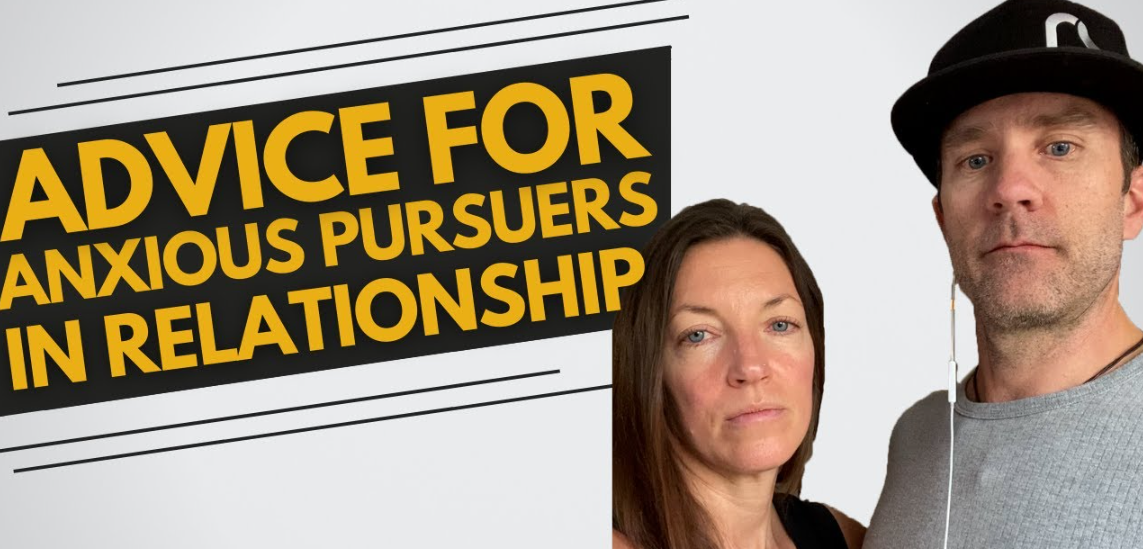There are many different pieces of advice for the anxious pursuer in a relationship. Some of them include scheduling time for emotional contact, avoiding sex drives, and distancing yourself.
Distancing
Distancing for the anxious pursuer in a relationship is an incredibly frustrating and unsatisfying experience. You may be tempted to sulk or pout, but it’s important to remember that you have more power than you think.
There are a few key steps you can take to start to calm your partner’s anxiety. First, you must learn to recognize and address your own fears. A big part of that is recognizing the purpose behind your partner’s actions.
One of the most common ways a distancer deals with his or her anxieties is by increasing the distance between the two of you. Taking the time to verbalize your feelings can be a great way to bring you closer together.
Another strategy is to schedule emotional contact. This can help to quell the need for your pursuer to engage. The time you schedule to communicate can also help to build trust and confidence in your relationship.
The pursuit-distancer dynamic is a common one in relationships. Both partners must recognize the other’s needs, and then create a plan for how they will meet them.
You must find a balance between intimacy and solitude. This is a critical component of any healthy romantic relationship. Without the appropriate amount of self-reliance, you may find yourself struggling to stay in the relationship.
You may want to consider hiring a professional to help you through this. Often, a therapist can provide the guidance you need to overcome your fears and reach a healthier, more satisfying place with your partner.
One of the most important aspects of a romantic relationship is the ability to communicate effectively. Getting to know your partner’s true feelings and expressing them in a non-judgmental way will go a long way toward building trust.

Scheduling time for emotional contact
If you are in a relationship with an anxious partner, you may want to schedule time for emotional contact. This might be in the form of a date night. While this may not be a high-energy activity, it is certainly a good way to show your affection.
There are many ways you can give your partner the gift of your presence, besides scheduling a date. You might even consider sending them a virtual love note or giving them a special treat.
Getting a partner’s attention might be a challenge, but you can certainly get it back by demonstrating interest in the right areas. For example, try talking to your partner about his favorite hobbies or sharing funny anecdotes about his past.
Another strategy you could use is to initiate more physical contact. Sex is a great way to make your pursuer feel secure. In addition, you can show him that you are a considerate and responsible person.
Finally, you might also want to plan for some alone time. It can be easy to veer off course in a relationship with an anxious partner. A distancer might be more likely to open up to you when you have some space between you. When you’re able to set some boundaries and let your partner know what you expect from him, you’ll be in a better position to handle the stress of your relationship.
Scheduling time for emotional contact can be a great first step towards strengthening your bond. However, you might want to consider getting the help of a professional if you aren’t sure how to go about doing this. Oftentimes, a good therapist will be able to give you some pointers on what to do to make the most of your time together.

Avoiding sex drives
Anxiety and sexual avoidance can create a harmful dynamic in relationships. Often, it is difficult to pinpoint the source of the anxiety. It can be due to a medical issue or a past traumatic experience. However, if it is not addressed, it will not go away.
In addition to anxiety, there are other reasons for sex avoidance. For example, it may be a matter of low libido. Other factors include a preoccupied or anxious partner.
Sex is a negotiation between two people. If one person is avoiding sex, the other is forced to engage. This is why it is important to address the issue.
Fortunately, it is possible to overcome these challenges. Usually, the goal is to find a balance between a desire for physical intimacy and a need for emotional connection.
A good starting point is to acknowledge the uncomfortable feelings that come up when your partner begins to withdraw. Then, you need to identify your own pursuing behavior.
Many times, a desire for intimacy can be fuelled by pent-up frustration. When you recognize your own pursuing behavior, you will be able to create a healthier relationship.
Avoidant attachment styles are a common problem for couples. They are often found in adolescents, and tend to consent to sexual activities in order to avoid being rejected.
These individuals often use fantasies as a substitute for intimate communication. Those who have this type of attachment style are less likely to be successful in long-term relationships.
Having a mismatched sex drive can be a very upsetting experience. While this may not be a life-threatening disorder, it can make sex a less enjoyable experience.
Ideally, a healthy relationship will balance the need for both intimacy and sex. However, when there is a disparity between a partner’s need for sex and a partner’s desire for intimacy, it can become a power struggle.
Breaking the cycle
If you’re struggling with a relationship where one partner pursues and the other is withdrawing, you’re not alone. This dynamic can be harmful to both parties. But it’s not impossible to break the cycle.
Pursuers and withdrawers both have a need to feel emotionally connected. The key to breaking the cycle is to meet that need. A lack of emotional connection can leave the withdrawer feeling unimportant and misunderstood. It also leaves the pursuer feeling smothered and pressured.
Pursuers need to learn how to self-soothe their anxiety and connect with their partner. They often try to get their needs met by focusing on their partner’s needs. However, this can lead to a situation where the partner gets confused.
When a relationship becomes stuck in the pursuit and withdrawal cycle, the pursuer often has to work harder to reconnect with the withdrawer. In the meantime, the withdrawer begins to fear being left by the pursuer. He or she may begin to withdraw emotionally, minimizing interactions, or simply walking away.
Rather than trying to change the partner, the distancer may need to create space for the other partner to open up. They can do this by scheduling quality time, giving them a safe environment to be vulnerable, and giving the other partner space to do the same.
To break the cycle, the partner must understand the underlying reasons for their behavior. They can share these with their partner, and offer a more softer view of the struggle. Having an understanding of the other’s reactions can lead to more empathy and deeper connection.
Pursuers and withdrawers can also break the cycle by being more honest with each other about their feelings. Those who are afraid of emotions may be unaware of the deep-seated emotional pain that exists under the surface.


